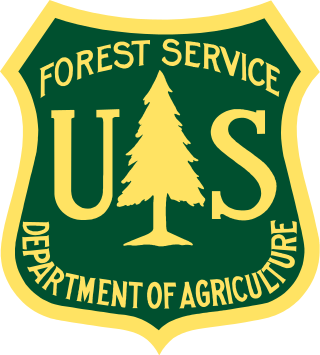
The United States Forest Service (USFS) is an agency within the U.S. Department of Agriculture that administers the nation's 154 national forests and 20 national grasslands covering 193 million acres (780,000 km2) of land. The major divisions of the agency are the Chief's Office, National Forest System, State and Private Forestry, Business Operations, as well as Research and Development. The agency manages about 25% of federal lands and is the sole major national land management agency not part of the U.S. Department of the Interior.
Natural Resources Conservation Service (NRCS), formerly known as the Soil Conservation Service (SCS), is an agency of the United States Department of Agriculture (USDA) that provides technical assistance to farmers and other private landowners and managers.
The Forest Legacy Program was established in the 1990 United States farm bill to protect environmentally important forest lands that are threatened by conversion to nonforest uses. It provides federal funding for conservation easements and fee simple purchases.
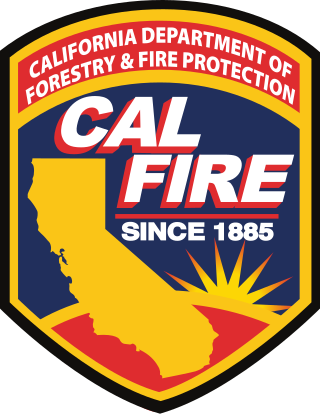
The California Department of Forestry and Fire Protection is the fire department of the California Natural Resources Agency in the U.S. state of California. It is responsible for fire protection in various areas under state responsibility totaling 31 million acres, as well as the administration of the state's private and public forests. In addition, the department provides varied emergency services in 36 of the state's 58 counties via contracts with local governments. The department's current director is Joe Tyler, who was appointed March 4, 2022, by Governor of California Gavin Newsom.

The Wisconsin Department of Natural Resources (WDNR) is a government agency of the U.S. state of Wisconsin charged with conserving and managing Wisconsin's natural resources. The Wisconsin Natural Resources Board has the authority to set policy for the WDNR. The WDNR is led by the Secretary, who is appointed by the Governor of Wisconsin. The WDNR develops regulations and guidance in accordance with laws passed by the Wisconsin Legislature. It administers wildlife, fish, forests, endangered resources, air, water, waste, and other issues related to natural resources. The central office of the WDNR is located in downtown Madison, near the state capitol.

The Michigan Department of Natural Resources (DNR) is the agency of the state of Michigan founded in 1921, charged with maintaining natural resources such as state parks, state forests, and recreation areas. It is governed by a director appointed by the Governor and accepted by the Natural Resources Commission. Since 2023, the Director is Scott Bowen. The DNR has about 1,400 permanent employees, and over 1,600 seasonal employees.
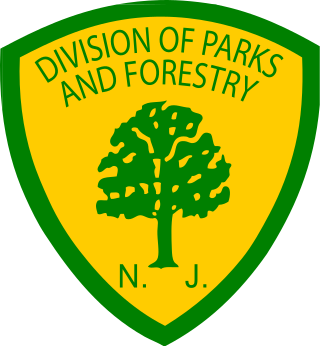
In the state of New Jersey, the New Jersey Division of Parks and Forestry is an administrative division of the New Jersey Department of Environmental Protection. In its most visible role, the Division is directly responsible for the management and operation of New Jersey's public park system which includes 42 state parks, 11 state forests, 3 recreation areas, and more than 50 historic sites and districts. However, its duties also include protecting state and private lands from wildfire, managing forests, educating the public about environmental stewardship and natural resources, as well as growing trees to maintain and restore forests in rural and urban areas, and to preserve the diversity of the trees within the forests.
The Maryland Department of Natural Resources (DNR) is a government agency in the state of Maryland charged with maintaining natural resources including state parks, public lands, state forests, state waterways, wildlife, and recreation areas. Its headquarters are in Annapolis.
Private landowner assistance program (PLAP) is a class of government assistance program available throughout the U.S. for landowners interested in maintaining, developing, improving and protecting wildlife on their property. Each state provides various programs that assist landowners in agriculture, forestry and conserving wildlife habitat. This helps landowners in the practice of good land stewardship and provides multiple benefits to the environment. Some states offer technical assistance which includes:
Zoar State Forest is a state forest located in King William County, Virginia, near the town of Aylett. It is used to grow timber and agricultural crops, maintain habitat for various species of wildlife, and to provide educational and recreational opportunities. All state forests are managed by the VDOF for multiple-use purposes, including watershed protection, recreation, timber production, fishing, and applied forest research. The state forests are self-supporting. In addition, one-fourth of all income is returned to King William County. Income is received from the sale of forest products.
The Cooperative Funds Act is a United States law, or series of laws, which authorized the United States Forest Service (FS) to collect donations from private partners to perform FS work. Contributions had to be voluntary, and by cash, check, or money order only. It was also stipulated that there could be no conflict of interest between the donor and the FS.
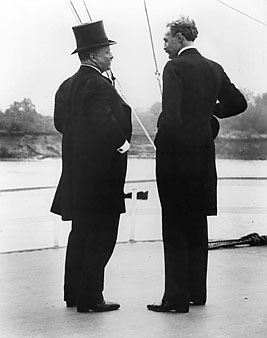
Starting in 1876, and undergoing a series of name changes, the United States Forest Service of the Department of Agriculture grew to protect and use millions of acres of forest on public land. Gifford Pinchot, an early advocate of scientific forestry, along with President Theodore Roosevelt and conservation organizations, led the effort to manage forest for the public good.
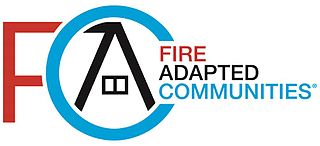
A fire-adapted community is defined by the United States Forest Service as "a knowledgeable and engaged community in which the awareness and actions of residents regarding infrastructure, buildings, landscaping, and the surrounding ecosystem lessens the need for extensive protection actions and enables the community to safely accept fire as a part of the surrounding landscape."

The Nebraska Forest Service is the state forestry agency for the state of Nebraska. The Nebraska Forest Service serves the citizens on Nebraska by operating with the mission to provide services and education to the people of Nebraska for the protection, utilization and enhancement of the State's tree, forest and other natural resources. Headquartered in Lincoln, Nebraska, the Nebraska Forest Service is embedded within the Institution of Agriculture and Natural Resources at the University of Nebraska-Lincoln.
The North Carolina Forest Service, formerly known as the North Carolina Division of Forest Resources is a North Carolina state government agency responsible for providing land management assistance to landowners. The agency's primary responsibility is wildland fire control on all state and privately owned land in North Carolina, United States. The Service was a Division of the N.C. Department of Environment and Natural Resources until July 2011 and is now part of the North Carolina Department of Agriculture and Consumer Services.

Wildfires are outdoor fires that occur in the wilderness or other vast spaces. Other common names associated with wildfires are brushfire and forest fire. Since wildfires can occur anywhere on the planet, except for Antarctica, they pose a threat to civilizations and wildlife alike. In terms of emergency management, wildfires can be particularly devastating. Given their ability to destroy large areas of entire ecosystems, there must be a contingency plan in effect to be as prepared as possible in case of a wildfire and to be adequately prepared to handle the aftermath of one as well.
The Alabama Forestry Commission (AFC) is the forest management agency for the U.S. state of Alabama. It was created as a state agency by an act of the Alabama Legislature in 1924. Its general mission is protecting Alabama's forests from wildfire, insects, and diseases; assisting landowners practice responsible forest management on their private property; and educating the general public about the value of Alabama's forests. It established the Alabama Champion Tree Program in 1970 and continues to maintain it.

The Mississippi Forestry Commission (MFC) is a State Agency in Mississippi with headquarters in Pearl. The Forestry Commission was authorized to:
prevent, control, and extinguish forest fires; enforce laws pertaining to the protection of forests and woodlands in the state; and encourage forest and tree planting for the production of a wood crop and other beneficial purposes.
The Montana Department of Natural Resources and Conservation (DNRC) is a government agency in the executive branch state of Montana in the United States with responsibility for ensuring sustainable development of the state's land, mineral, natural gas, oil, timber, water, and other resources.










